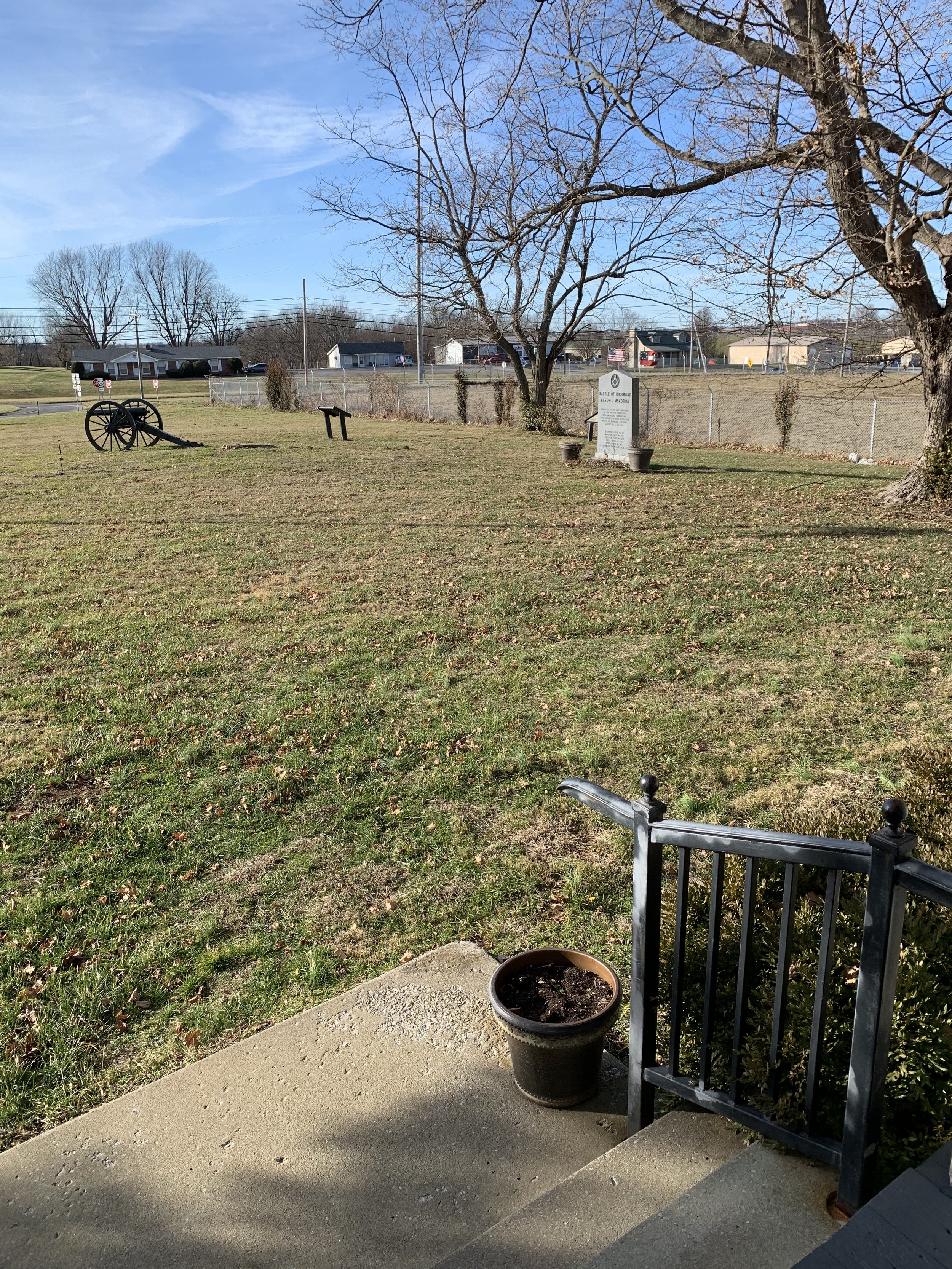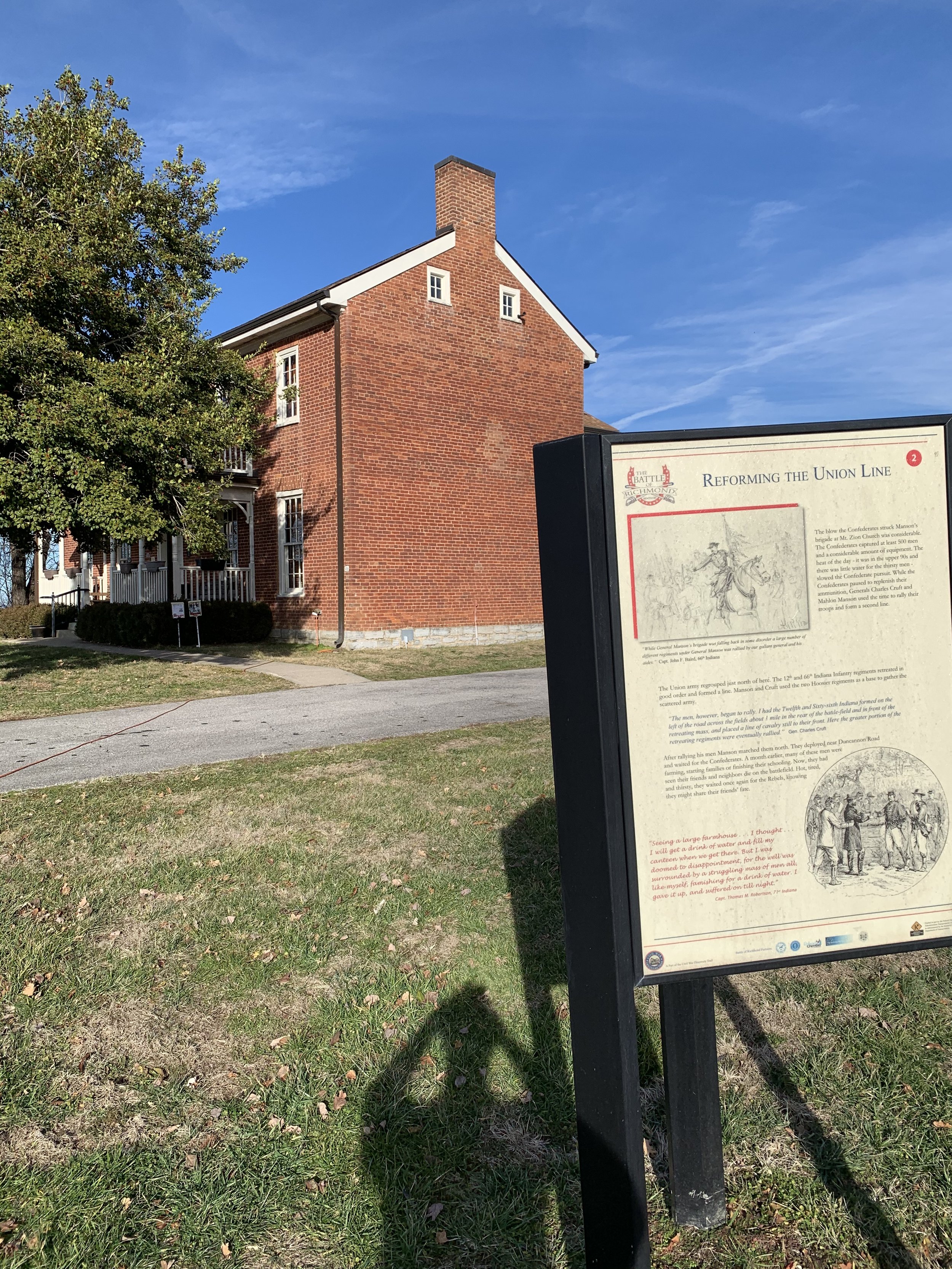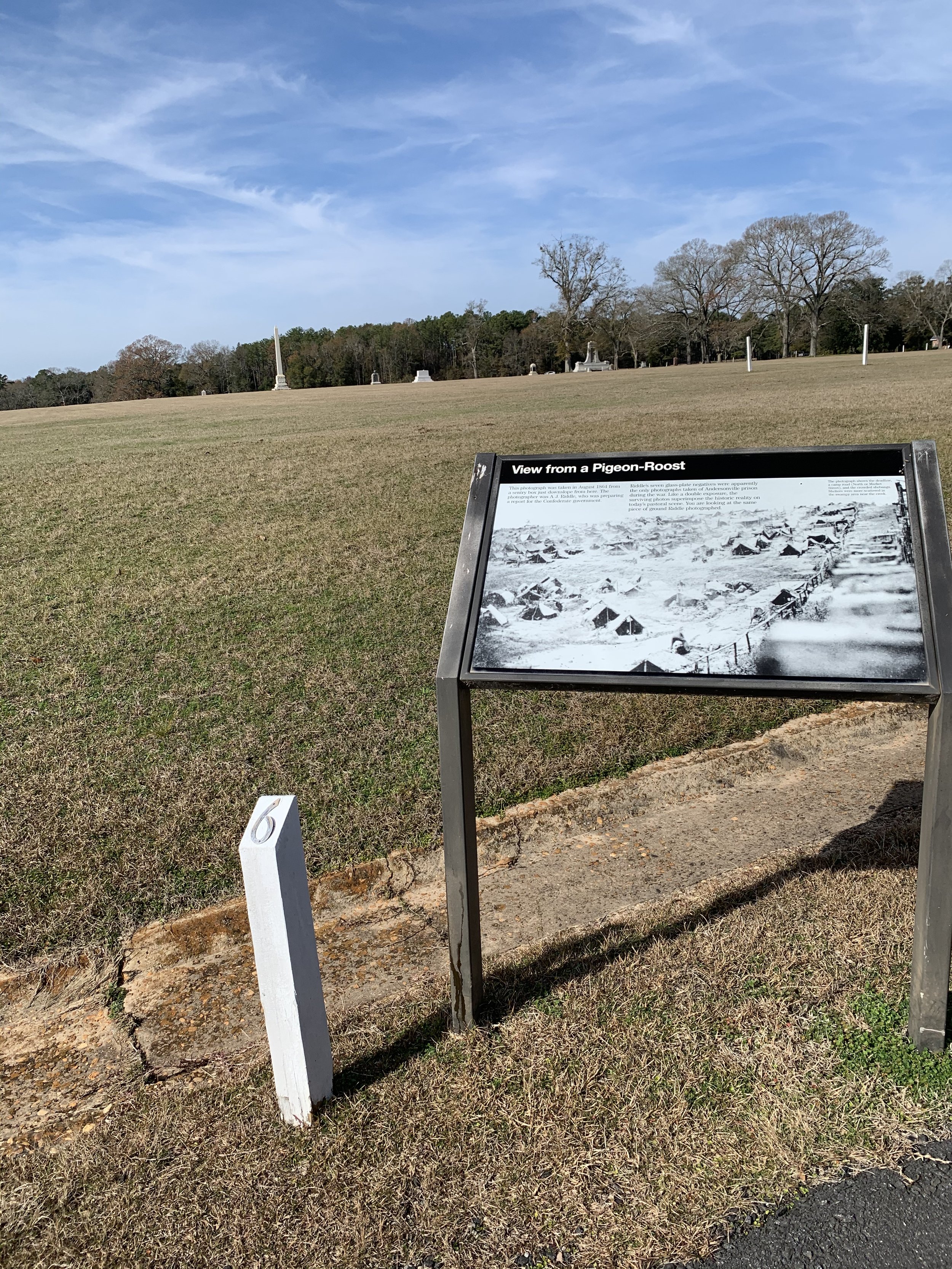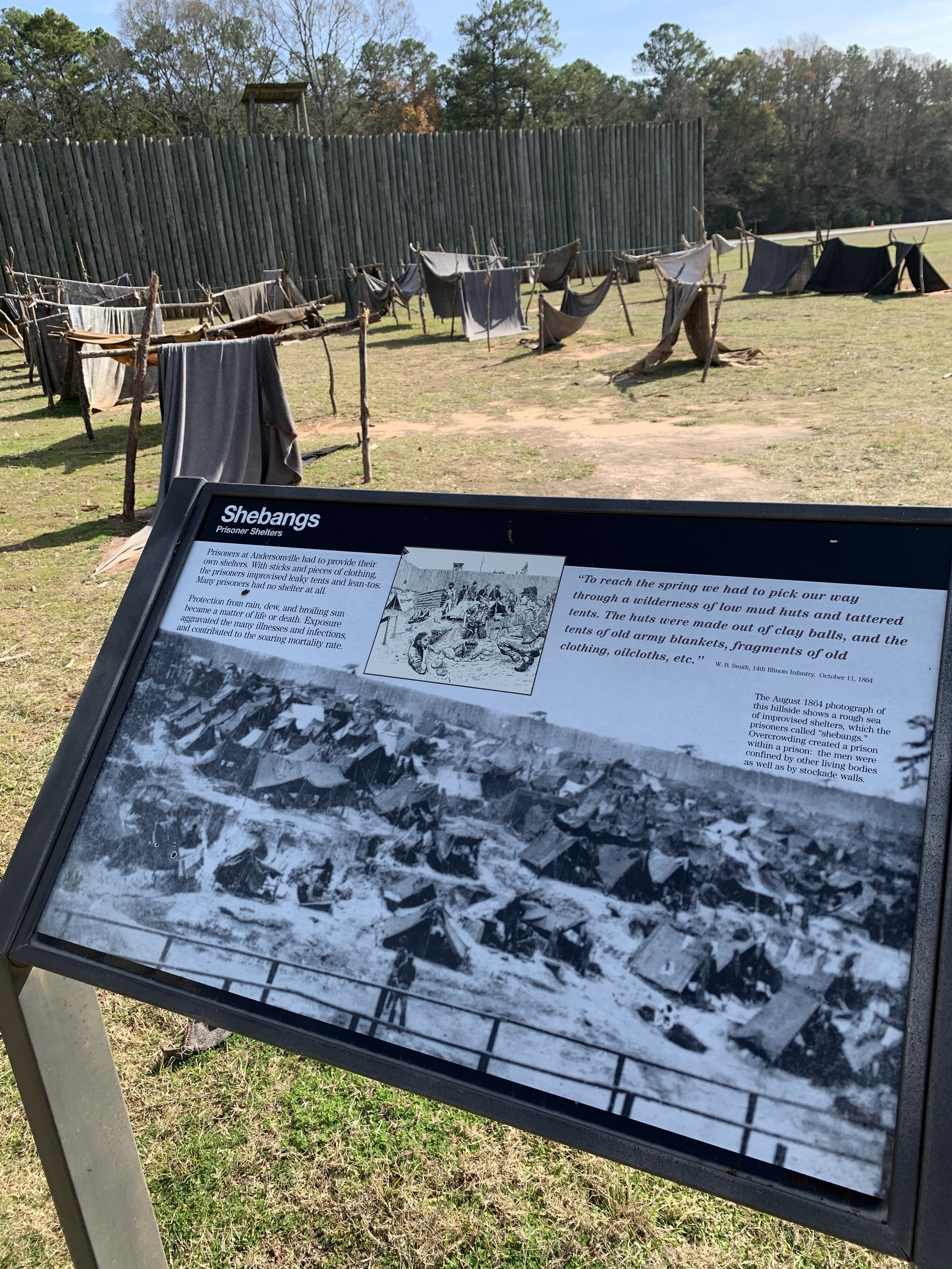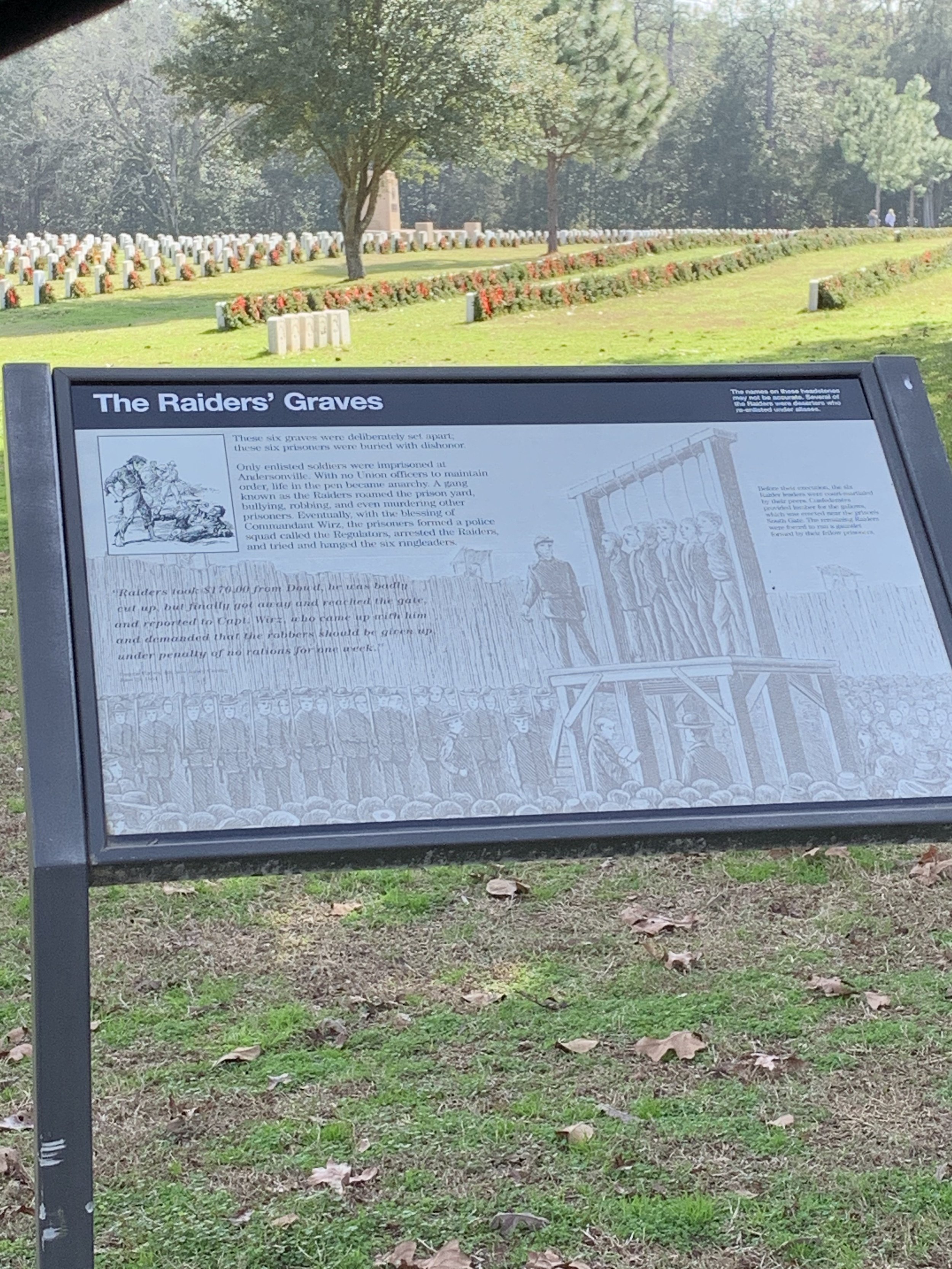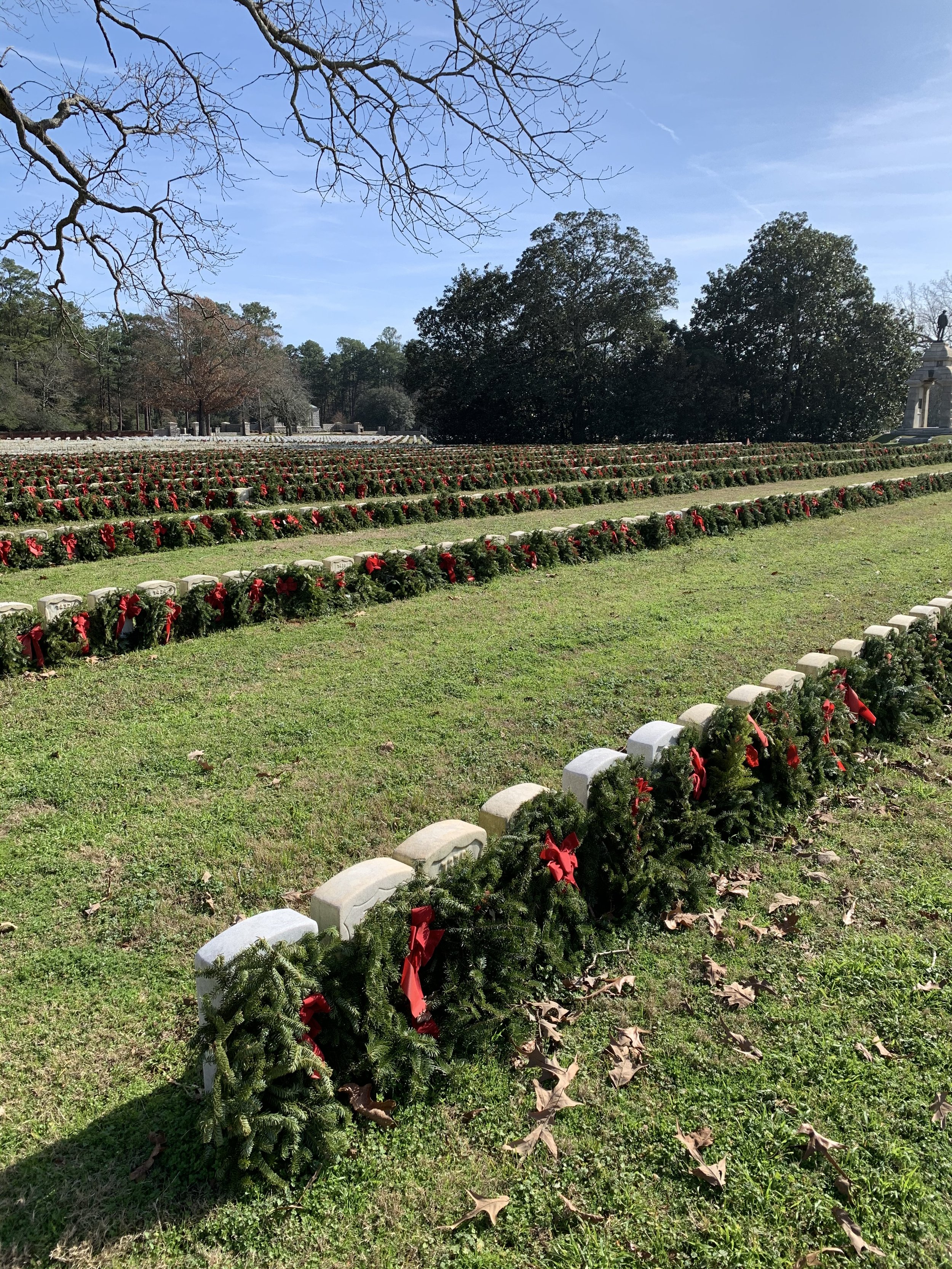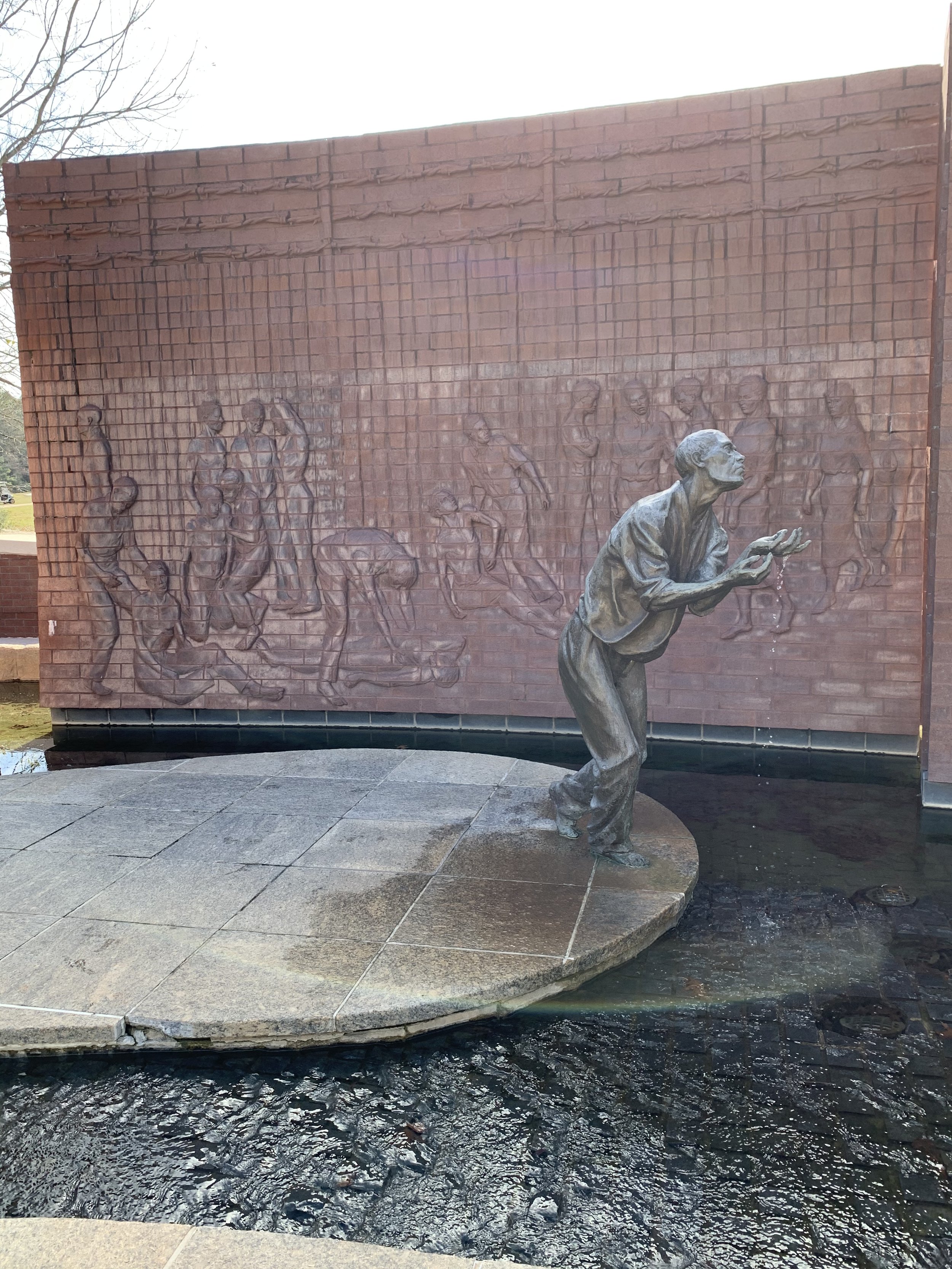Road Trip! Richmond, KY Battlefield and Andersonville National Historic Site
We took this trip in December of 2019 with a cruise at the end of it, so it wasn’t the typical roadtrip where the roadtrip itself was the destination, but we hit two historical sites in two different states on the way to Florida so I figured I’d include them both in one post. This was the last hurrah for us before the world went into pandemic lockdown, and we’re lucky we weren’t at sea when it hit!
Richmond Battlefield
Richmond, Kentucky had been on my list for a while as the site of the second largest battle fought in the state of Kentucky during the War Between The States. I had actually called down there years ago to ask about what there was to see and they sent me a little pamphlet (this may have been before the Internet lol). But in the years since the American Battlefield Trust has acquired and preserved 365 acres of the battlefield and there are walking trails and a visitor center (which unfortunately was closed when we got there). It’s also very accessible - if you’re driving south on I-75 you’ll go right past it - it’s not even 10 minutes from the highway and you can cover what’s there in an hour or two (or even less) depending on how detailed you like to get in reading all the wayside markers and hitting the walking trails.
Richmond was a Confederate victory and it was the first battle that Patrick Cleburne had an independent command as a brigadier general. Eventually earning the nickname “Stonewall of the West” he was one of the best military leaders in the Confederacy throughout the war until his death at the battle of Franklin in the last western gasp of the rebels in 1864. He was hit by a stray bullet that passed through his jaw at Richmond but was back in action at Perryville just a couple months later. Wow. The commanders in this engagement were General William “Bull” Nelson for the Union - a friend of President Lincoln who was also wounded here and then murdered in Louisville by a fellow officer less than two months later. Nelson was a character - a big man with a “belligerent attitude” according the marker below and the only naval officer to achieve the rank of Major General on either side. I stitched together the panel on him at the battlefield because I photographed it in three images at the time…this should actually make it a little easier to read for this blog. His story is quite fascinating.
They’ve done a pretty good job with the battlefield with what they’ve had to work with as they continue to reclaim more of it for preservation and interpretation. They are actually working on saving a 20 acre target there as we speak. This is why I often tell people that this is the “golden age” of battlefield preservation. There is a huge, well-funded and well organized effort to preserve our battlefields - at Richmond alone 600 acres have been saved from development since 2001 and almost 2 miles of walking trails and interpretive signs were installed in 2008 here. It serves as an important battle in the battle for Kentucky - the Confederate victory here led to the huge clash at Perryville which ended rebel hopes of controlling Kentucky in any significant way, and the clash at Richmond was not some small skirmish. It was a complete Confederate route of the union forces in the very brother-vs-brother-like Confederate Army of the Kentucky vs. the Union Army of the……..yep - Kentucky. The rebels suffered 206 killed, 844 wounded and most of the rest captured or missing, while the union had 78 killed and 372 wounded. Here are a few more of my photos from the battlefield starting in and around the property by Pleasant View - the home owned by Kavanaugh and Elizabeth Armstrong at the time and scene of the early morning phase of the battle as the Confederates push the Union from the south of town northward:
Here’s a great battle map from the American Battlefield Trust and you can see where these photos were taken in the blue area - the point marked “Barnett” is Pleasant View (Joseph Barnett was the original owner who built the house in 1825).
Heading northward towards the Rogers House
As for the Confederate leadership let’s try the “stitch” again for General Kirby Smith…
You’ll notice any interpretive markers with red headings are denoting confederate info and blue for union. And as for Cleburne:
As I mentioned earlier the visitors center was closed but it’s a significant landmark - the Rogers House is located in the area where the completion of the route of the Union army took place as you can see on the battle map and there are several monuments and markers there including the ones on the generals that I stitched together.
I’ll probably make my way back to Richmond at some point since we were on a bit of a time crunch but this was a worthy and convenient stop!
Andersonville National Historic Site
Andersonville is another one I had wanted to visit for a long time and it did not disappoint - a fascinating site with a great museum on American POWs from all wars - not just the Civil War. A fitting place for a museum on the topic at the most well known and notorious prison camp of the Confederacy. Camp Sumter (the official name of the prison) is a little off the beaten path but you definitely get a flavor of driving through the deeeep south driving to it with plenty of peanut farms all around. It’s one of those things when you’re in the Civil War knowledge frame of mind and you feel like you’re in the deep heart of the Confederacy way behind the lines on your way to the Confederate prison camp… Yeah… it’s a bit heavy. Exciting and dreadful at the same time as an amateur historian and a professional human I guess (?). Hard to explain. Highly recommend - overall it’s really well interpreted and a unique experience not quite like a battlefield - no battles occurred here.
The camp itself was supposed to hold about 10,000 prisoners but quickly swelled to way more than that - getting up to 32,000 at one point. There were no barracks, few resources, a creek that ran through the camp that became contaminated with human waste turning it into a disgusting poisonous swamp and prisoners died at an extremely high rate. It turned into more of a death camp than a prison camp - of the 45,000 prisoners imprisoned there during the 14 months it was in operation almost 13,000 died and most of them are buried there. That was what you always seemed to see in Civil War books where there was a mention of Andersonville - the rows of headstones, and yes - they do make for a stark picture indeed, more than most Civil War cemeteries I’ve seen. There are plenty of stories within the story here such as the story of Captain Henry Wirz - the commandant of the camp who was tried and hung for his crimes after the war. Not sure if he was truly a complete scumbag or a good man simply following orders who tried to secure better resources for the prisoners and was left hanging by the Confederate government. Both of these views persist mind you, and whether they are driven by Lost Cause ideology or anti-south agenda is hard to sort out as is common in cases like these. I don’t totally know where I stand on him. Was he a good guy? Not particularly. Was he an awful man who should have been hung for war crimes? I kinda think maybe not? Was he made a scapegoat? Yes. Should there be a monument to him in the town of Andersonville (there is by the way)? I say no. Another fascinating and complicated chapter of Civil War history. So let’s get to some pictures:
Providence Spring is the spot where at one point during a heavy rainstorm on August 14, 1864 a spring suddenly gushed from the hillside providing desperately needed fresh water to the prisoners and the event became legendary - many attributed it to divine intervention and there is a pavilion and markers there.
The North Gate was reconstructed from archeological evidence - the stockade was originally built by slaves. As one of the markers states, new arrivals coming through this gate “could foresee their own fate” in the stench of the camp and the emaciated overcrowded prisoners.
Panorama inside the North Gate
The Star Fort and Hospital fields stood just outside of the stockade on an elevation that gave the commandant a view of the camp and a spot to defend and control the camp as needed - they were in an impossible situation trying to manage an overcrowded camp with a dire lack of resources to do so.
Panoramic photo of the Star Fort
Only seven known photos of the camp exist from during the war. The two below depict the “shebangs” - little lean-to shelters of sticks and clothes to try to get some protection from the elements. The exposure claimed many lives. The photo on the left shows the exact viewpoint of the wartime photo on the marker, and the one on the right shows examples of what the shebangs looked like by the other part of the reconstructed stockade.
Andersonville National Cemetery is one of 14 cemeteries managed by the National Park Service. The soldiers were buried shoulder to shoulder in trenches which is why the headstones are so small and close together. There are lots of other military personnel buried at Andersonville and new burials still happen there. Of particular interest is the story of the Raiders - 6 prisoners who were deliberately buried separately and with dishonor. As the marker explains these 6 were a gang inside the prison who stole from, bullied and even murdered other prisoners. Commandant Wirz allowed the rest of the prisoners to establish their own police - a group of “Regulators” who arrested the 6 Raiders, tried them for their crimes and hung them.
So all in all a visit I won’t forget - a worthy stop and the museum of American POWs is also really well done. Highly recommended! I hope you enjoyed my recap of our trips to Richmond and Andersonville!
M10 Social is owned by Doug Cohen in West Bloomfield, MI and provides social media training and digital marketing services from the Frameable Faces Photography studio Doug owns with his wife Ally. He can be reached there at tel:248-790-7317, by mobile at tel:248-346-4121 or via email at mailto:doug@frameablefaces.com. You can follow Doug’s band Vintage Playboy at their Facebook page here.
******************************************************************************************
Tune in to the 📷Doug&Ally📷Morning Show T-F between 8:30 & 11 EST UTC-4 on Heckle by following them on Heckle or Twitter at @frameablefaces! Also check out the Doug & Ally Morning Show podcast at anchor.fm/frameablefaces and everywhere you listen to podcasts! Doug also tweets at @dougcohen10 and @M10Social!












